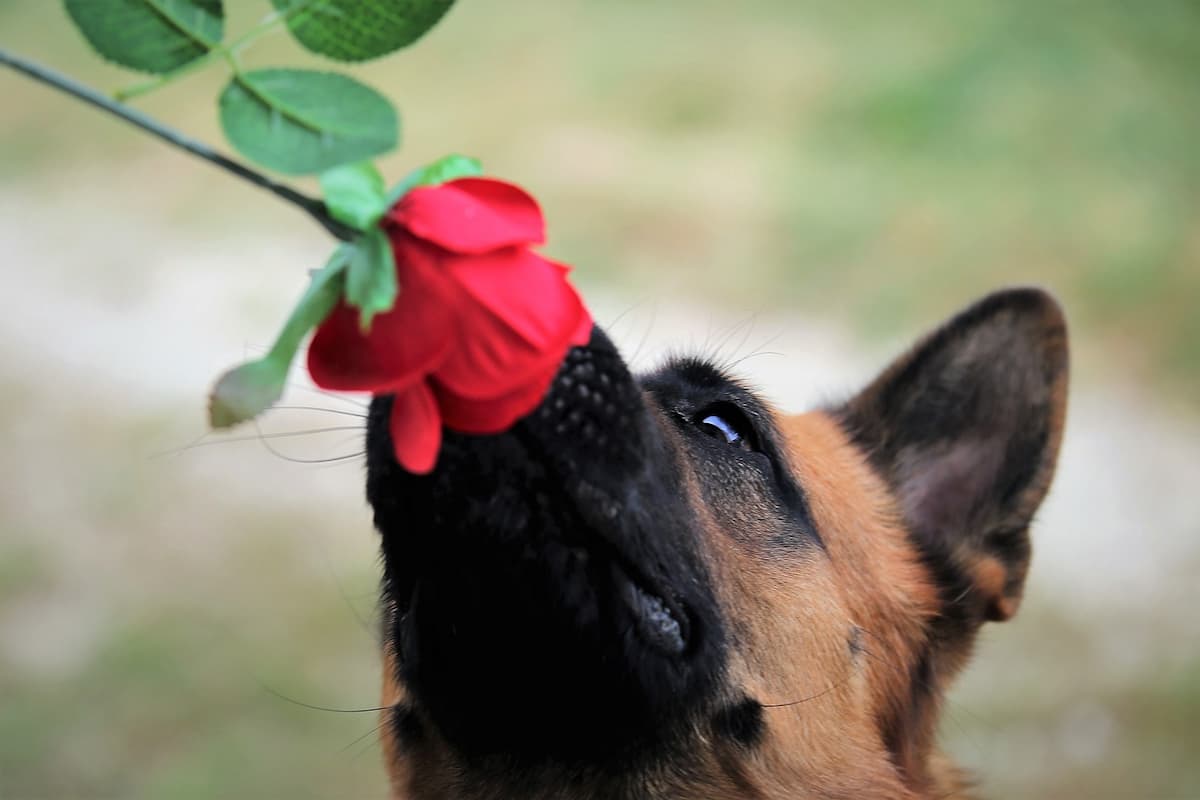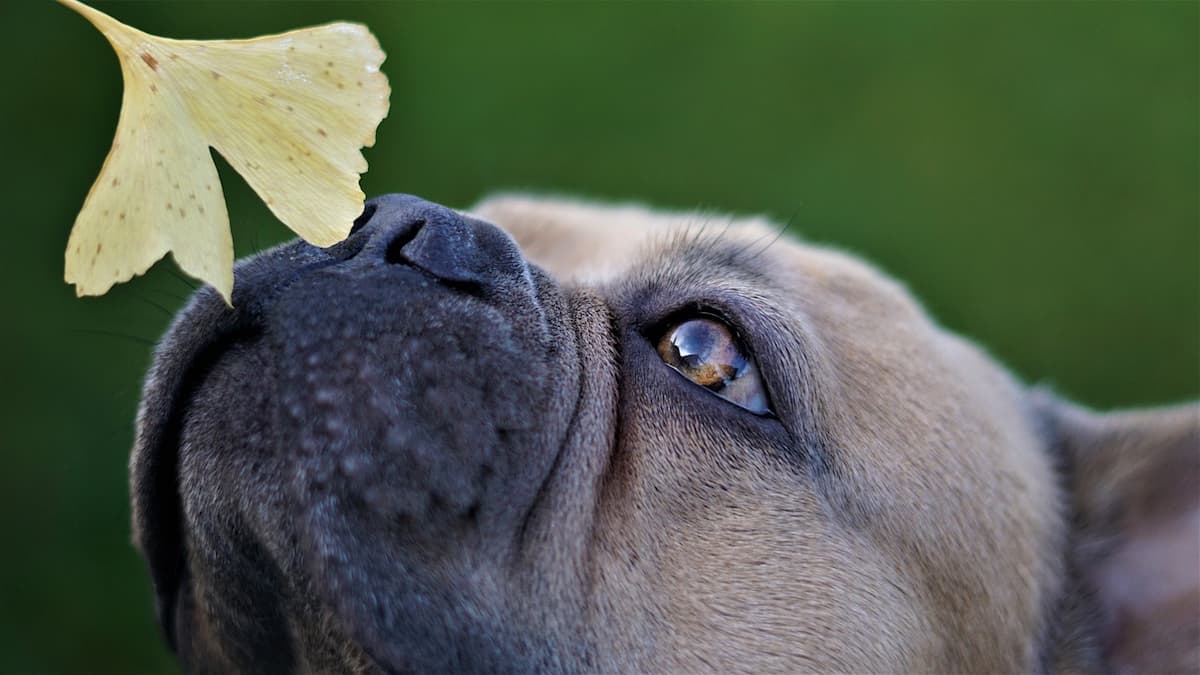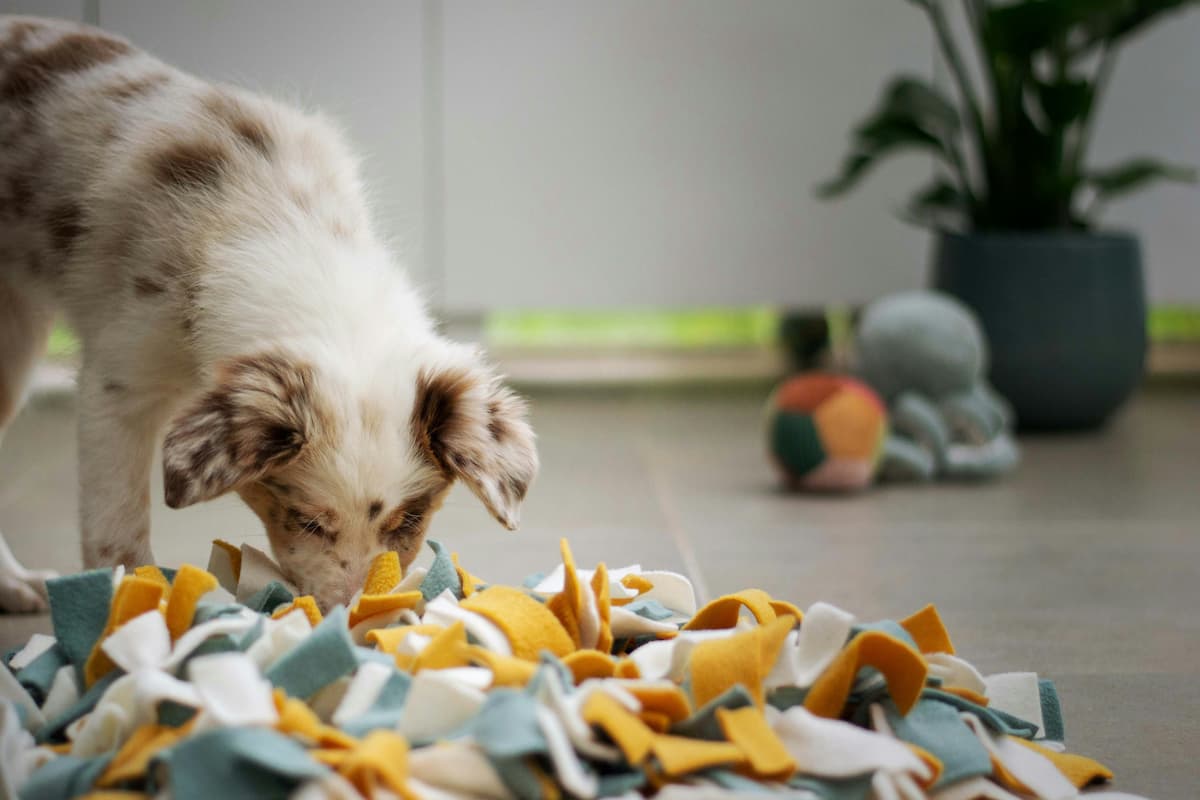You walk through the front door after a long day, greeted by an energetic ball of fur jumping up and down with excitement.
You bend down to give your furry companion a welcoming pat on the head, only to be met with their wet, cold nose investigating every inch of your body.
Familiar scenario, isn’t it? We’ve all experienced the relentless curiosity of our canine friends, as they explore us with their inquisitive noses.
But have you ever wondered why dogs feel the need to sniff us so much?
What exactly are they trying to discover with their extraordinary sense of smell?
Read on the find out why our dogs like to sniff you so much.
Why Dogs Have a Need to Sniff
Dogs have an incredible talent for sniffing out even the tiniest molecules in their environment, which is why they can’t resist sniffing everything around them, including you! But why do they feel the need to investigate every nook and cranny of your body with their little wet noses? Here are some reasons for their sniffing behavior:
Super Sniffers: Dogs possess a sense of smell that is thousands of times more powerful than ours.
While we humans rely heavily on our vision and hearing to gather information about the world, dogs rely primarily on their sense of smell.
Their snouts are equipped with intricate structures that enable them to detect scents and identify specific odors with astonishing accuracy and are able to detect and analyze scents that goes far beyond what humans are capable of.
World of Scents: Every surface, object, and living being leaves behind a unique olfactory signature that is undetectable to us but grabs a dog’s attention instantly.
When a dog sniffs you, they are actually capturing an array of information, like your emotional state, health, and even your daily activities.
They can sense fear, happiness, stress, and various other emotions that we may not outwardly express.
It’s like reading a book about your life through your scent, and for our four-legged friends, this is the most natural way to gather information and understand their surroundings.
Believe it or not, dogs can also detect certain cancers, low blood sugar, or even an impending seizure just by giving you a good sniff! That’s why some dogs are trained to become medical assistance or therapy dogs.
They can literally save lives, all thanks to their extraordinary sense of smell.
Marking Their Territory: Beyond uncovering intriguing scents, dogs also sniff to communicate and mark their territory.
Their noses are like biological sticky notes that allow them to leave messages for other dogs and animals sharing the same environment.
When a dog sniffs around an area, they’re essentially claiming it as their own and informing everyone that “this spot is taken.”
This innate marking behavior is why dogs tend to sniff certain spots repeatedly during walks or when meeting other dogs.
It’s their way of saying, “I’ve been here before, and it’s my turf!”
Establishing bonds: Dogs also sniff us as a way of bonding and strengthening the human-animal bond.
You see, in the dog world, scent is equivalent to personal identification. When dogs greet each other, they sniff each other’s behinds to gather vital information about the other.
While we may not engage in such interesting behavior, dogs see sniffing as a way of getting to know us better and forging a deeper connection.
It’s essentially their version of a friendly handshake or a warm hug.
The Science Behind a Dog’s Amazing Olfactory System
As noted above, dogs have an amazing sniffer and the average canine’s olfactory system is far more complex than we give credit for.
Here is the science behind how your pup’s nose works:
An intricate nasal structure: To truly understand why dogs are such avid sniffers, let’s take a peek inside their snouts.
A dog’s nose is far more intricate than meets the eye.
Not only do they have a highly sensitive snout, but they also possess an additional olfactory organ called the Jacobson’s organ, which enhances their sense of smell further.
This organ allows dogs to detect even the minutest of scents, providing them with a unique olfactory experience.
An astonishing number of scent receptors: While humans have around 5 million scent receptors, dogs blow us out of the water with an astounding 220 million receptors! Just imagine the world of smells that they can explore with such a vast olfactory arsenal.
These numerous receptors allow dogs to not only detect different scents but also analyze and interpret the information within them.
The power of scent memories: For dogs, sniffing goes beyond merely identifying a scent; it’s a way of gathering valuable information.
When a dog sniffs you, they can learn a great deal about your emotions, health, and even familiarize themselves with your personal scent.
This ability allows them to form scent memories and recall specific scents, which is crucial when locating missing persons or detecting certain diseases.
Tips for Responding to Your Dog’s Sniffing Behavior
Whether it’s their way of saying hello, gathering information about their surroundings, or simply showing affection, decoding your dog’s sniffing habits can help foster a stronger bond between you and your four-legged companion.
Here are some tips to help you better understand and respond to your dog’s sniffing behavior:
Stay calm and let them sniff: When your dog approaches you, don’t be tempted to push them away or interrupt their sniffing session.
Sniffing is a natural instinct for dogs, and allowing them to indulge in this behavior shows them that you respect their communication style.
It’s their way of gathering information about you, other animals, and the environment – so let them have their sniffing fun!
Observe their body language: Pay attention to your dog’s body language while they’re sniffing.
Are they relaxed, tail wagging, and ears perked up? This indicates that they’re comfortable and enjoying the interaction.
On the other hand, if their body is tense, tail tucked between their legs, or they seem anxious, it may be a sign that something is bothering them.
In such cases, redirect their attention to something positive, like a favorite toy or treat, to help ease their anxiety.
Set boundaries when necessary: While it’s important to honor your dog’s desire to sniff, there may be times when you need to establish some boundaries.
For instance, if their sniffing becomes invasive or uncomfortable, gently redirect their attention by offering a simple command like “sit” or “stay.” Reinforce the behavior with positive reinforcement, such as treats or verbal praise, to let them know they’re doing the right thing.
By setting boundaries, you can ensure a healthy balance between allowing your dog to satisfy their sniffing curiosity and maintaining your own personal space.
Remember, understanding and responding to your dog’s sniffing behavior is a way to strengthen your bond and communication with them.
Embrace their innate need to explore and gather information through sniffing, and you’ll find yourself embarking on a wonderful adventure of discovery alongside your furry friend.
So, the next time your dog dives in for a sniff, embrace the moment and let their little nose work its magic!
FAQ
Q: What kind of information could they be getting from all those sniffs?
A: Oh, you’d be amazed! Dogs use their sense of smell to learn about the world around them.
When they sniff you; they can detect things like your gender, your age, your emotions, and even if you’ve recently had a delicious meal.
They can sniff out hidden medical conditions too! It’s like they’re reading an entire autobiography just by taking a whiff.
Q: That’s incredible! But why do they have to sniff private places? It can be quite embarrassing!
A: Ah, the awkward side of being a dog owner! Well, dogs have special scent glands located in their noses, mouths, and paws. These glands produce pheromones, which are chemical signals that carry important messages for dogs.
When they give those private areas a good sniff, they’re picking up on these unique scents that reveal essential information about other dogs or animals in the area.
Q: Is there anything we can do to prevent dogs from sniffing us so much?
A: While it may be embarrassing or uncomfortable at times, it’s important to remember that sniffing is a natural behavior for dogs.
It’s their way of exploring and gathering information. However, you can always redirect their attention with distractions like toys or treats if things get a bit too invasive.
Just remember to be patient with your furry friend! Q: Can we use this incredible sense of smell for something useful?
A: Absolutely! Dogs have actually been trained to use their extraordinary olfactory abilities to help us humans.
They can be trained as search and rescue dogs to find missing persons, as drug-sniffing dogs to detect illegal substances, or even as medical assistance dogs to alert us when our blood sugar levels are too high or too low.
They truly are our four-legged superheroes! Q: So, the next time my dog gives me a sniff, I’ll take it as a compliment, right?
A: Absolutely! When your dog sniffs you, it’s their way of saying, “Hey there, I want to know more about you!”
Closing Remarks
From their incredible olfactory system to their natural curiosity, dogs have a whole world of information right under their wet noses.
Next time your pooch starts dissecting your scent, remember that it’s simply their way of understanding the world around them.
By sniffing, they gather tidbits of information, decode our emotions, and even establish a stronger bond with us. So, let them indulge in their snout investigations, and maybe even appreciate their extraordinary talent.
Remember, when your furry friend gives you a friendly sniff, it’s their special way of showing love and interest in every little detail that makes you, well, you!












